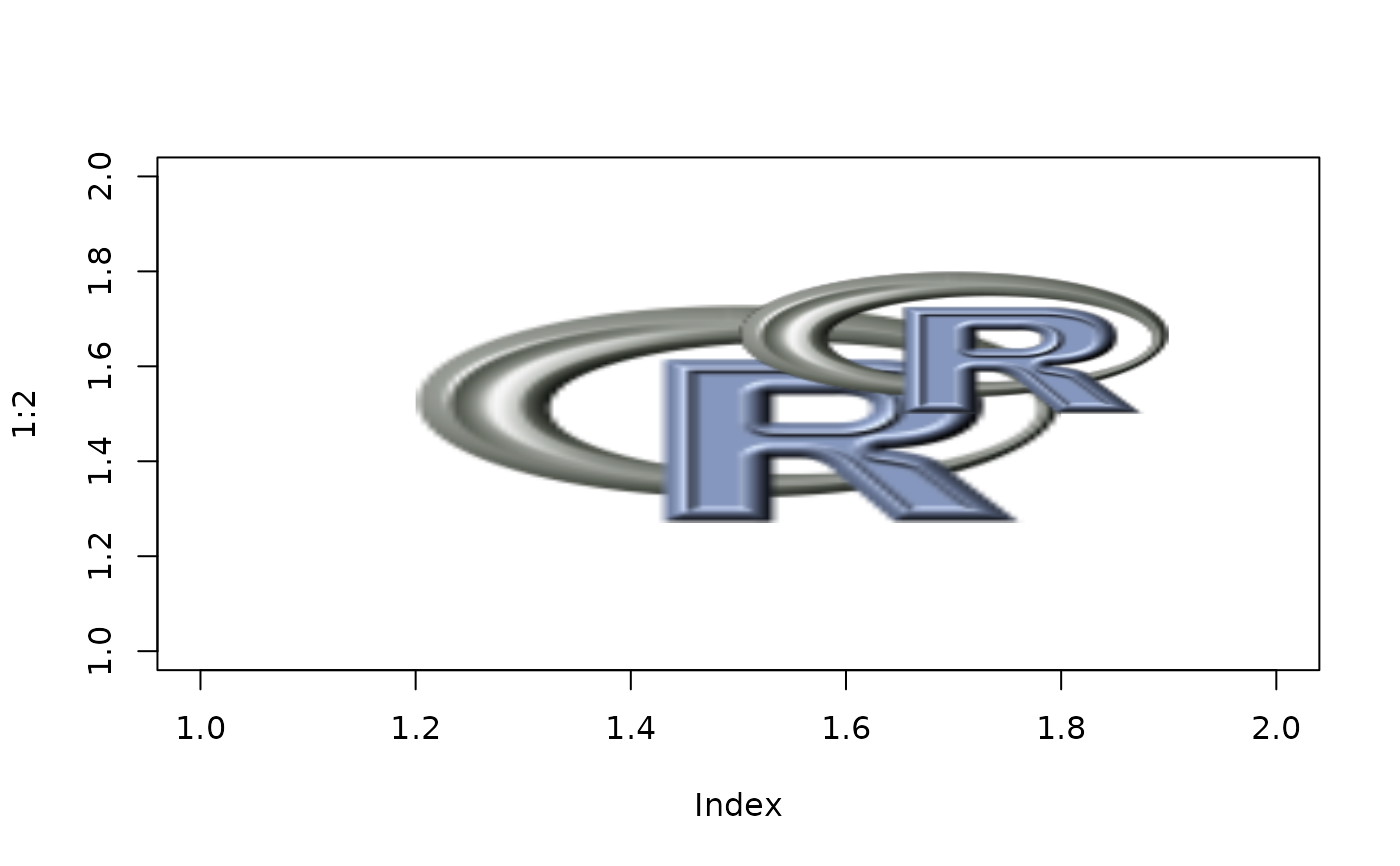Read a bitmap image stored in the TIFF format
readTIFF.RdReads an image from a TIFF file/content into a raster array.
readTIFF(source, native = FALSE, all = FALSE, convert = FALSE,
info = FALSE, indexed = FALSE, as.is = FALSE,
payload = TRUE)Arguments
- source
Either name of the file to read from or a raw vector representing the TIFF file content.
- native
logical, determines the image representation - if
FALSE(the default) then the result is an array, ifTRUEthen the result is a native raster representation (suitable for plotting).- all
logical scalar or integer vector. TIFF files can contain more than one image. If
all=TRUEthen all images are returned in a list of images. Ifallis a vector, it gives the (1-based) indices of images to return. Otherwise only the first image is returned.- convert
logical, if
TRUEthen first convert the image into 8-bit RGBA samples and then to an array, see below for details.- info
logical, if set to
TRUEthen the resulting image(s) will also contain information from TIFF tags as attributes- indexed
logical, if set to
TRUEthen indexed images will be returned in the indexed form, i.e., as a matrix of integer indices referencing into a color map which is returned in the"color.map"attribute. This flag cannot be combined withconvertornativeand has no effect on images that are not indexed.- as.is
logical, if
TRUEan attempt will be made to return the original integer values without re-scaling where possible- payload
logical, if
FALSEthen only metadata about the image(s) is returned, but not the actual image. Impliesinfo=TRUEand all image-related flags are ignored.
Value
If native is FALSE then an array of the dimensions height
x width x channels. If there is only one channel the result is a
matrix. The values are reals between 0 and 1 (except for 32-bit floating
point sample storage which are unscaled reals, and for indexed and
as.is=TRUE which are integers). If native is
TRUE then an object of the class nativeRaster is
returned instead. The latter cannot be easily computed on but is the
most efficient way to draw using rasterImage.
If all is TRUE or a vector of image indices,
then the result is a list of the above with
zero or more elements. If all is a vector of indices, the result
will have exactly the same length as all. If an index does not
appear in the file, the corresponding list entry will be NULL.
If payload=FALSE then the result is equivalent to
info=TRUE but without the image data and returned as a data frame.
If all is either TRUE or a vector then the result will
be a data frame with each row corresponding to one image.
Details
Most common files decompress into RGB (3 channels), RGBA (4 channels),
Grayscale (1 channel) or GA (2 channels). Note that G and GA images
cannot be directly used in rasterImage unless
native is set to TRUE because rasterImage requires
RGB or RGBA format (nativeRaster is always 8-bit RGBA).
TIFF images can have a wide range of internal representations, but only
the most common in image processing are directly supported (8-bit, 16-bit
integer and 32-bit float samples). Other formats (color maps, sub-8-bit
images, etc.) are only supported via convert=TRUE which uses the
built-in facilities of the TIFF library to convert the image into RGBA
format with 8-bit samples (i.e. total of 32-bit per pixel) and then
store the relevant components from there into real arrays. This is the
same path as used by native=TRUE and so differs only in the
output value. Note that conversion may result in different values than
direct acccess as it is intended mainly for viewing and not computation.
Note
Some non-standard formats such as 12-bit TIFFs are partially supported (there is no standard for packing order for TIFFs beoynd 8-bit so we assume big-endian packing similar to the default fill order and only support single channel or indexed).
The as.is=TRUE option is experimental, cannot be used with
native or convert and only works for integer storage
TIFFs.
See also
Examples
Rlogo <- system.file("img", "Rlogo.tiff", package="tiff")
# read a sample file (R logo)
img <- readTIFF(Rlogo)
# read it also in native format
img.n <- readTIFF(Rlogo, native=TRUE)
# and also in converted
img.c <- readTIFF(Rlogo, convert=TRUE)
# read all contained images
str(readTIFF(Rlogo, all=TRUE))
#> List of 1
#> $ : num [1:76, 1:100, 1:4] 0 0 0 0 0 0 0 0 0 0 ...
# pick some images
str(readTIFF(Rlogo, all=c(5, 1, 3)))
#> List of 3
#> $ : NULL
#> $ : num [1:76, 1:100, 1:4] 0 0 0 0 0 0 0 0 0 0 ...
#> $ : NULL
# only show information
str(readTIFF(Rlogo, payload=FALSE))
#> 'data.frame': 1 obs. of 13 variables:
#> $ width : int 100
#> $ length : int 76
#> $ bits.per.sample : int 8
#> $ samples.per.pixel: int 4
#> $ sample.format : chr "uint"
#> $ planar.config : chr "contiguous"
#> $ rows.per.strip : int 76
#> $ compression : chr "LZW"
#> $ x.resolution : num 300
#> $ y.resolution : num 300
#> $ resolution.unit : chr "inch"
#> $ orientation : chr "top.left"
#> $ color.space : chr "RGB"
# if your R supports it, we'll plot it
if (exists("rasterImage")) { # can plot only in R 2.11.0 and higher
plot(1:2, type='n')
if (names(dev.cur()) == "windows") {
# windows device doesn't support semi-transparency so we'll need
# to flatten the image
transparent <- img[,,4] == 0
img <- as.raster(img[,,1:3])
img[transparent] <- NA
# interpolate must be FALSE on Windows, otherwise R will
# try to interpolate transparency and fail
rasterImage(img, 1.2, 1.27, 1.8, 1.73, interpolate=FALSE)
} else {
# any reasonable device will be fine using alpha
rasterImage(img, 1.2, 1.27, 1.8, 1.73)
rasterImage(img.n, 1.5, 1.5, 1.9, 1.8)
}
}
